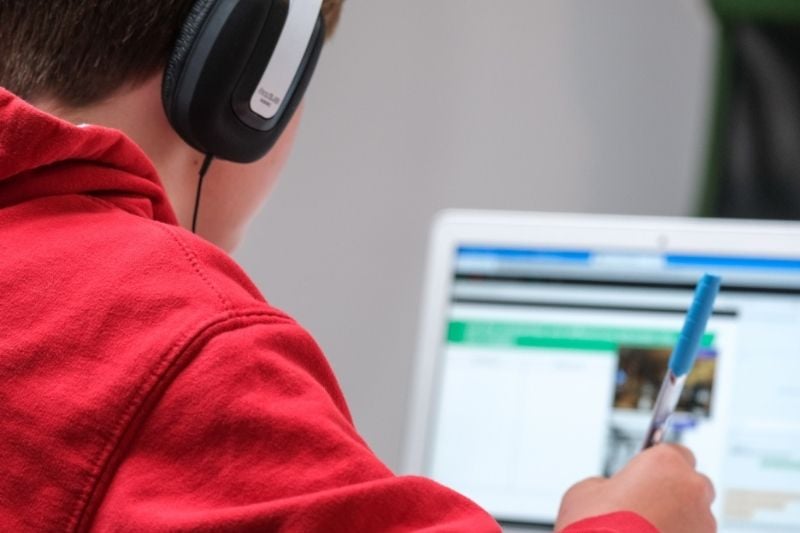When we think of school, we imagine rows of desks and chairs, classrooms, and exams. School however, may soon be synonymous with Artificial Intelligence (AI) helpers, video games, and Virtual Reality (VR) headsets. Keep on reading for the future evolution of EdTech.
The global EdTech market is estimated to reach US$404 billion by 2025. Technologies like Artificial Intelligence (AI), seamless internet connectivity, Augmented Reality (AR) and Virtual Reality (VR), cloud computing, and gamification will soon deliver our education in new ways. Although education has traditionally been conservative towards change, the Covid-19 pandemic has accelerated the sector’s digital transition. As teachers and students adapt to EdTech, they can vocalise classroom and learning needs, helping to shape and mature the industry. Eventually, traditional schools will need to be aligned with trends enabled by EdTech. Remote, flexible, and independent learning will dominate; standardised, exam-oriented, classroom learning will be replaced with personalised, interactive approaches. Educational goals will focus on skills fitted to 21st-century workforce needs such as critical thinking, creativity, and digital fluency.

Main Education Technology Trends
Extended Reality (XR)
XR technology alters user experience by introducing extra-sensory stimuli. Educational theories have emphasised the benefits of experiential learning. EdTech takes advantage of XR’s potential by adding an immersive, experiential component to learning. The ability to feel your avatar’s actions, engage with objects in a three dimensional environment, and receive feedback in real time makes learning faster cognitively, physically, and emotionally. Hong Kong-based startup AESIR designs XR-based games for people with special needs to help them learn life and communication skills. Given that only a strong internet connection is required to run an XR programme, the technology is cost-effective, and can be easily scaled for thousands of students locally and expanded globally.

Artificial Intelligence (AI)
“Personalisation at scale” sounds like an oxymoron, but EdTech is using big data and AI to achieve this. Algorithms can be developed from large amounts of student data, which would then be the basis of a process-driven automated AI system that can adjust learning content, teaching style, and pace according to an individual students’ needs. The use of AI-powered learning software will allow the collection of more data, which will In turn, continue to suggest or automatically adjust software improvements. XSEED Education’s learning software, for example, uses analytics to understand students’ assessment scores. Educators can then track student activity, observe their learning styles and behaviours, and measure engagement.

Cloud-Based Technology
Cloud computing refers to the availability of computing services over the internet – for example, cloud data storage systems like iCloud or Google Drive. Post-pandemic, hybrid flexibility (HyFlex) is trending in education, where digital learning is fused with the physical classroom. The latest developments in cloud-based apps can further fuse the two realms. Apps like the Explain Everything Whiteboard and Scribble Together Whiteboard allow users to collaborate in real time. Large screen monitors – a physical panel in the classroom- can connect to the internet, so that everything written is uploaded, allowing in-class and remote students to have the same learning experience. Classroom management portals such as Canvas or Google Classroom are also developing new technology to enhance their features.

EdTech in Asia
Education is a crucial building block in the Fourth Industrial Revolution, and a primary focus for many APAC countries. Industry 4.0 is transforming all sectors including education, which has also been a longstanding component of international soft power.
In China, a deep respect for education is engrained in its culture, and has turned the sector into an extremely lucrative one. Coupled with its desire to compete with the West’s monopoly on education, the country has invested heavily in EdTech, amounting to US$40 billion. China’s most notable startups include Squirrel AI, NetDragon, YuanFuDao, and iTutorGroup.
In Southeast Asia, although innovation in education was slow to start, it is now rapidly gaining momentum. EdTech in the region raised US$480 million of venture capital funding over the last 5 years. The top ASEAN players are Jakarta-based Ruangguru, an online video learning platform with over 15 million users, Hanoi-based Topica, which serves 1 million working adult learners, Singapore’s Emeritus, which partners with elite global universities to provide courses, and Thailand’s Taamkru, which offers gamified lesson plans for preschoolers across Thailand, Singapore, and Vietnam.

Challenges to the EdTech Industry
However, the rise of EdTech, combined with extended quarantine and home-schooling, has brought us new challenges. EdTech is premised on access to smart devices and internet connection. Southeast Asia lacks universal smartphone and electricity access, let alone computer ownership. The entrance of for-profit tech companies into the sector further privatises education. Education International hosted a webinar in July to report on the extreme “extent of private actors’ influence in education” since the beginning of this pandemic. These raise social inequality concerns. Moreover, EdTech solutions increase harmful screen time and deprioritise human contact, which is fundamental for childhood development. Salman Khan, a pioneer in EdTech and founder of Khan Academy, warned against this recently. In addition, the push for data-driven education raises ethical questions about biases in the design and development of AI systems, potential misuse of personal data, and a society falling further under surveillance capitalism.
EdTech is here to stay. It offers us the chance to reshape education to fit our 21st century needs, but we should seize this opportunity mindfully.
Related Articles
10 EdTech Questions That Parents Have, Answered by an Expert
Snapask: The EdTech App Helping Millions of Students Learn Across Asia





